Homemade Ciabatta Rolls Made with Fresh Milled Flour
These rustic ciabatta rolls made with fresh milled flour are going to be a staple in your home! Learn how to bake crusty, airy ciabatta rolls using freshly milled flour. This step-by-step recipe is perfect for sandwiches or dinner sides.
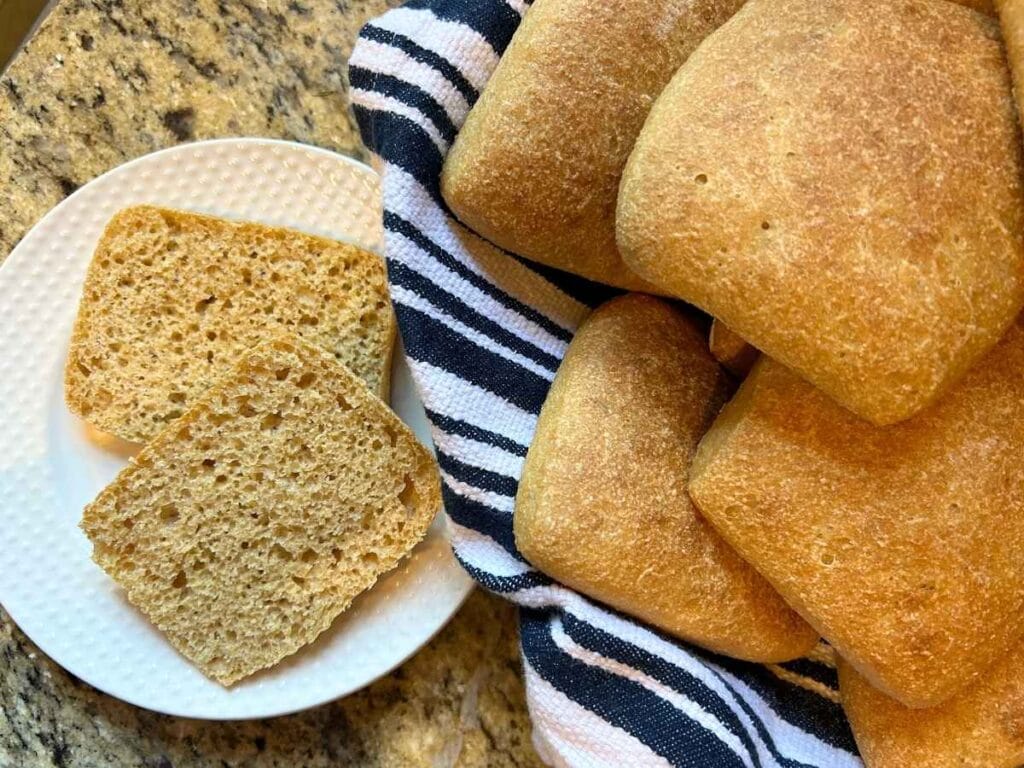
At first I thought ciabatta rolls might be too much of a leap with fresh-milled whole wheat flour, but it works great! We ended up with Italian bread rolls that made my kids want them slathered in butter on repeat.
These are satisfying, rustic, and have that homemade feel. If you’ve got a grain mill (or just like bread), this recipe is for you.
Want more fresh milled homemade bread recipes? Try making Super Soft Milk Bread, Overnight Sandwich Bread, Dinner Rolls, Hawaiian Rolls, Sourdough Challah, English Muffins, Texas Roadhouse Copycat Rolls, or Cornbread Muffins.
This post contains affiliate links. As an Amazon associate or other affiliate, I earn from qualifying purchases. We try to recommend products we personally use or have used and trust. If you choose to purchase through our links in this post, we may receive a commission, at no extra cost to you. Read the full disclosure here.
Why You’ll Love These Ciabatta Rolls
It’s the perfect bread for sandwiches, sides, or snacking. Slice a roll open and you’ll see all those lovely air pockets with the perfect crusty outside.
Fresh-milled flour keeps all the good stuff in like the bran, germ and oils, so the flavor is deep and nutty. Plus, you’ll get a crisp crust with a tender, open crumb. This dough is a high hydration dough (so it’ll be a bit sticky), but a little gentle handling makes it doable, even for the beginner!
The holes are perfect for dipping in olive oil, sopping up soups, or holding mayo on sandwiches.
Homemade Ciabatta Roll Recipe
Tools
- Grain mill
- Kitchen scale
- Stand mixer with dough hook attachment
- Dough scraper/bench scraper
- Mixing bowl
- Parchment paper or dough transfer sling
- Baking sheets
- Cooling rack
- Rice flour for dusting
- Instant read thermometer
- Dough whisk
Ingredients
Pre-Ferment
- 114 grams Water, cool
- 111 grams Hard White Wheat
- Pinch of Active Dry Yeast (about 1/8 tsp)
Dough
- All of Pre-Ferment
- 145 grams Kamut Wheat
- 270 grams Hard White Wheat
- 30 grams Nonfat Dry Milk Powder
- 284 grams Water, cool
- 50 grams Olive Oil
- 9 grams Salt
- 0.5 grams Active Dry Yeast (about 1/4 tsp)
Notes:
- Yields about 12 medium ciabatta rolls
- Fresh-milled flour absorbs water differently depending on the grain and environment, so don’t be shy about adding a little more water or flour if needed. The dough should be wet and a little sticky, but still workable.
- Since it is a high-hydration dough, you will need to handle the ciabatta dough gently
- You can keep the ciabatta large and not cut into pieces, you may just need to increase baking time by about 5 minutes
- You can bake these rolls on a preheated pizza stone, just watch your baking time as they may cook faster
Step-by-Step Homemade Ciabatta Rolls
Pre-ferment: The night before baking, add flour to cool water and mix in yeast with a fork. Cover and let rest overnight on the counter.
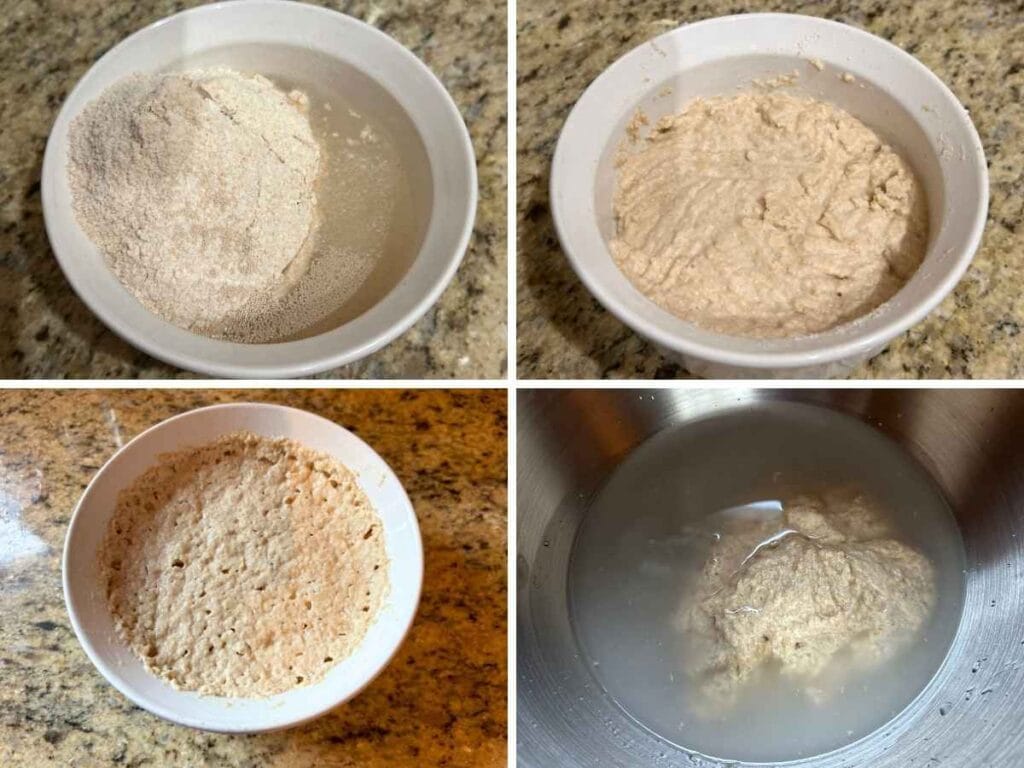
Mix Dough: The next day, add preferment to the mixing bowl and mix with water, then mill in flour, add milk powder, and combine to a shaggy dough. Cover and let the dough rest for 30 minutes.
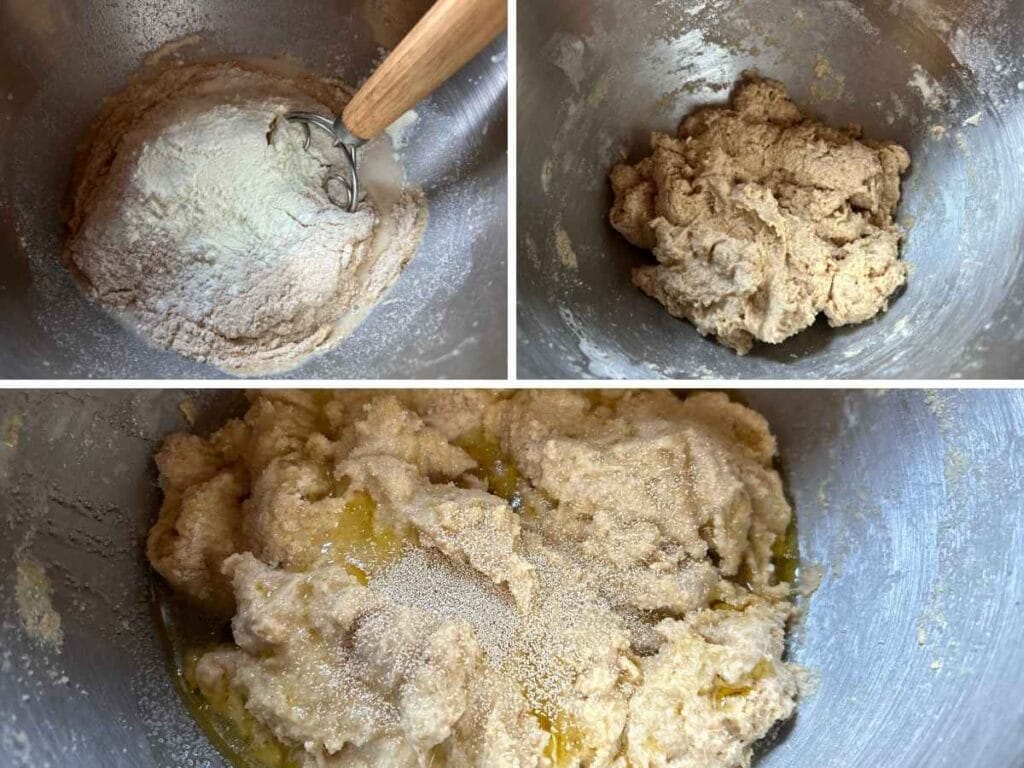
Knead Dough: Add oil, salt, and yeast, then knead dough on low speed for 5-10 minutes, or until a windowpane is reached and the dough is clean off the sides of the bowl. This is a wet dough, so it will not make a perfectly taught ball.
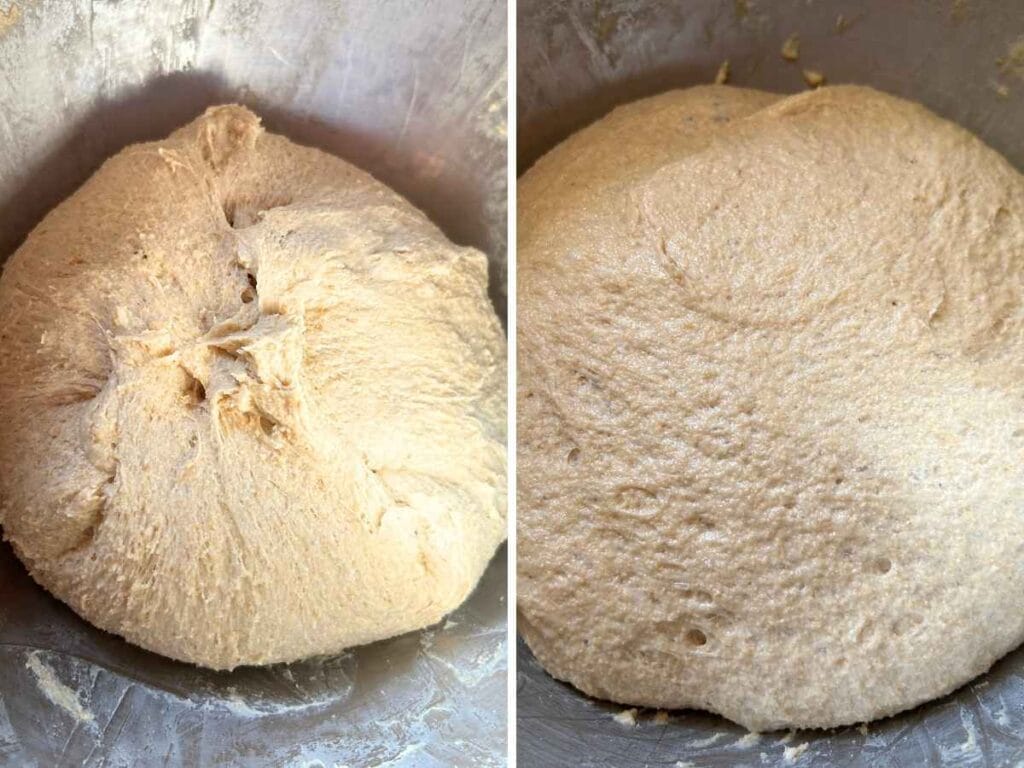
Bulk Rise: Cover and let the dough rise for a bulk fermentation of about 3 hours. After each hour, perform a gentle coil fold (pull gently on the side of the dough up and place it back on itself in the bowl). After the 3rd hour/coil fold, let the dough rest for 5-10 minutes in the bowl while you prepare and flour parchment paper on baking sheets.
Shape: With greased hands, gently place dough ball onto a lightly floured piece of parchment paper, dividing it into 2 pieces, and put one of the pieces on another sheet of parchment. Pat and stretch (or gently roll out) each section into a rectangle shape about 5 x 10 inches (should be about 1/2 inch thick). Cut each section into 6 pieces and spread them out on the parchment so they are not touching.
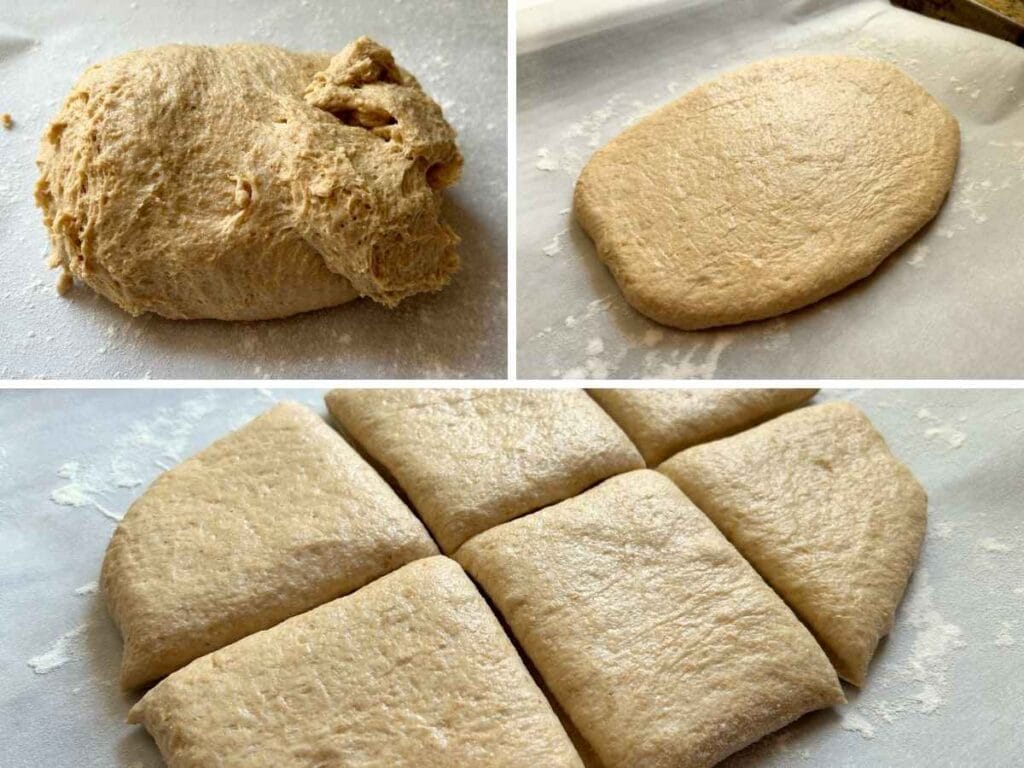
Second Rise: Cover cut dough with greased plastic wrap and let rise for another 1-2 hours, or until they are fluffy and airy. When proofing is almost done, preheat the oven to 425 degrees.
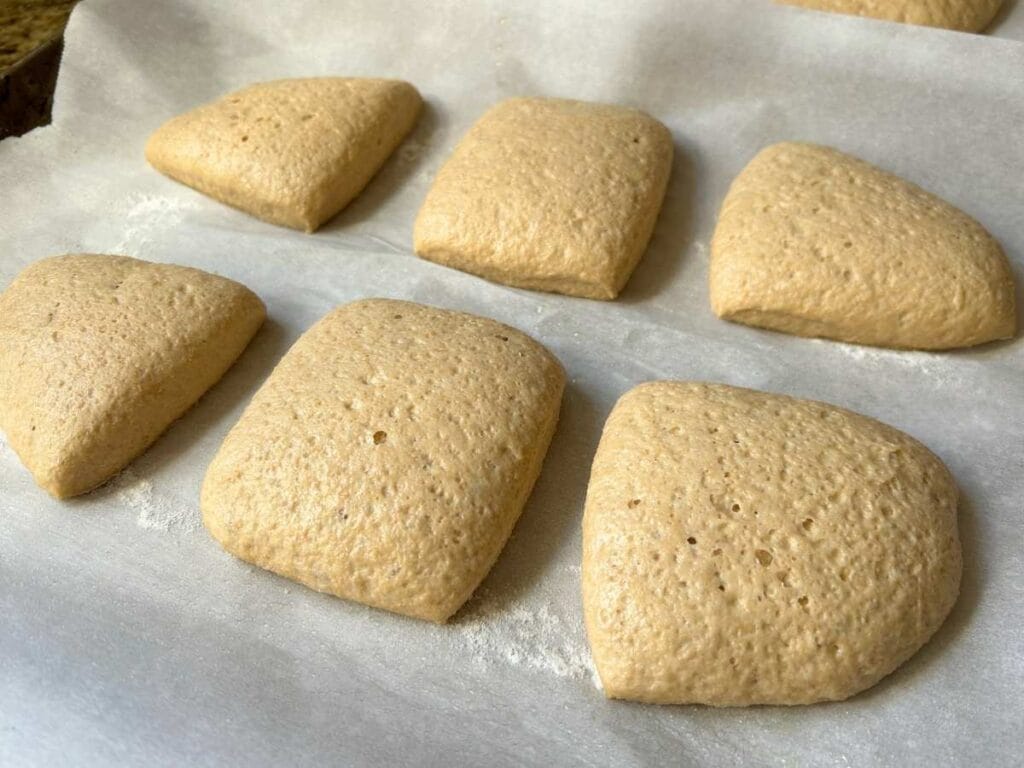
Bake: Bake ciabatta rolls for 15 minutes or until the internal temperature is 200 degrees. Keep an eye on these so they don’t burn!
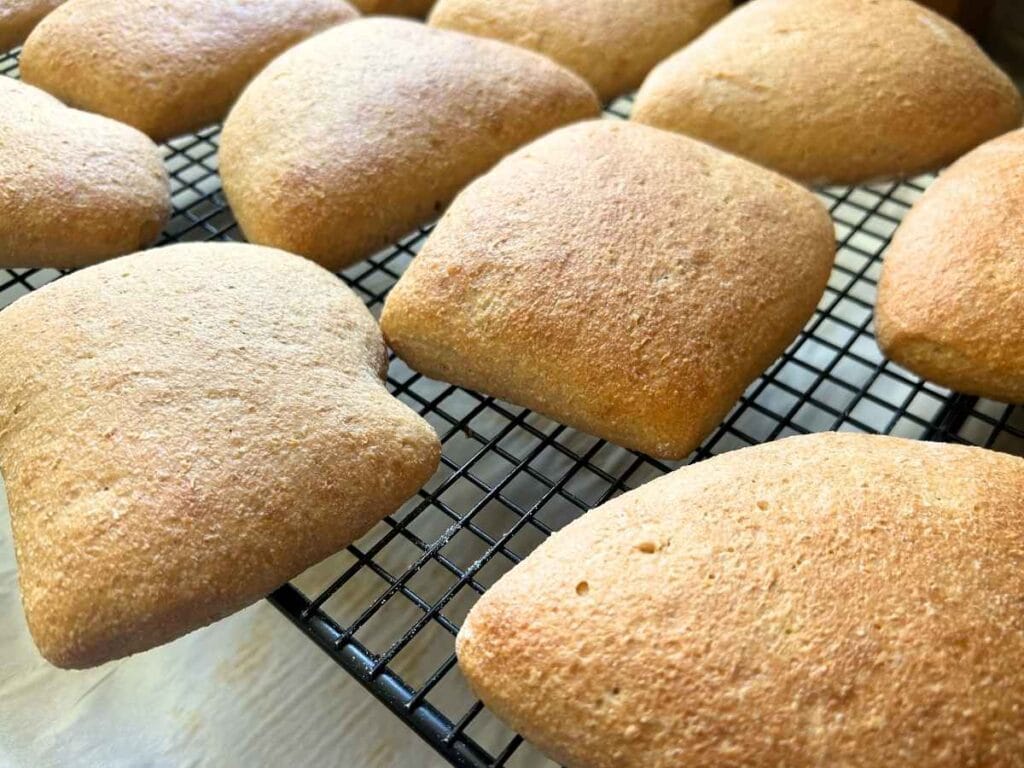
Cool: Remove and immediately place on a wire rack to cool. Enjoy warm if you want to tear right in, or cool completely before slicing.
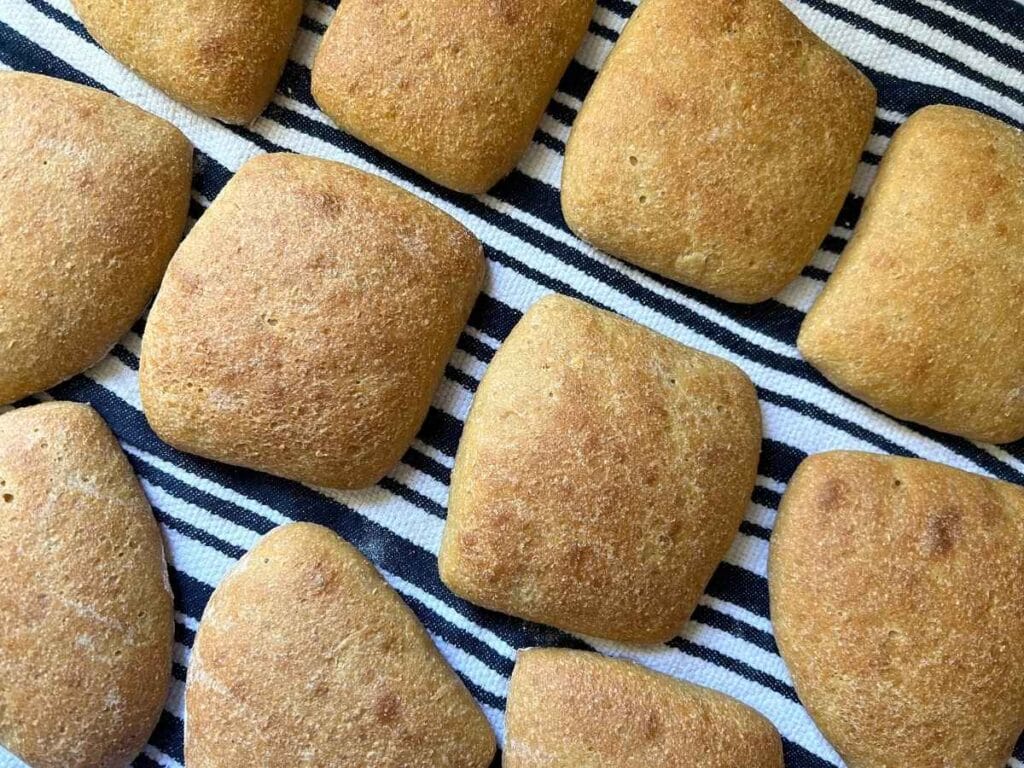
Variations & Twists
Want to switch it up between batches? Try some whole grain blending by swapping in 20–30% of rye, spelt, or einkorn for a new flavor dimension.
Throw in some fresh or dried rosemary, thyme, and top with shredded parmesan for an herbaceous flavor perfect for serving with a roast. Or try brushing rolls with garlic butter after baking for a garlicky zing.
Watch for a sourdough ciabatta recipe coming soon!
The final result of these delicious ciabatta rolls is something special. With just a handful of ingredients, you’ve got a great recipe that’ll be one of your favorite ways to use fresh milled flour. I hope this becomes one of your go-to bread recipes.
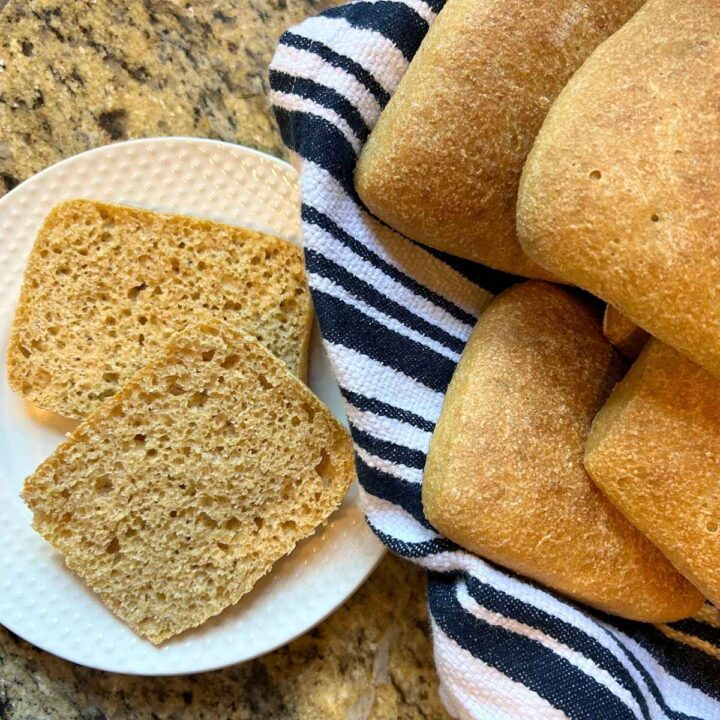
Homemade Ciabatta Rolls Made with Fresh Milled Flour
Learn how to bake crusty, airy ciabatta rolls using freshly milled flour. This step-by-step recipe is perfect for sandwiches or dinner sides.
Ingredients
Pre-Ferment
- 114 grams Water, cool
- 111 grams Hard White Wheat
- Pinch of Active Dry Yeast (about 1/8 tsp)
Dough
- All of Pre-Ferment
- 145 grams Kamut Wheat
- 270 grams Hard White Wheat
- 30 grams Nonfat Dry Milk Powder
- 284 grams Water, cool
- 50 grams Olive Oil
- 9 grams Salt
- 0.5 grams Active Dry Yeast (about 1/4 tsp)
Instructions
- The night before baking, make the pre-ferment. Add flour to cool water and mix in yeast with a fork. Cover and let rest overnight on the counter.
- The next day, add preferment to the mixing bowl and mix with water, then mill in flour, add milk powder, and combine to a shaggy dough. Cover and let the dough rest for 30 minutes.
- Add oil, salt, and yeast, then knead the dough on low speed for 5-10 minutes, or until a windowpane is reached and the dough is clean off the sides of the bowl. This is a wet dough, so it will not make a perfectly taught ball.
- Cover and let the dough rise for a bulk fermentation of about 3 hours. After each hour, perform a gentle coil fold (pull gently on the side of the dough up and place it back on itself in the bowl).
- After the 3rd hour/coil fold, let the dough rest for 5-10 minutes in the bowl while you prepare and flour parchment paper on baking sheets.
- With greased hands, gently place the dough ball onto a lightly floured piece of parchment paper, dividing it into 2 pieces, and put one of the pieces on another sheet of parchment.
- Pat and stretch (or gently roll out) each section into a rectangle shape about 5 x 10 inches (should be about 1/2 inch thick). Cut each section into 6 pieces and spread them out on the parchment so they are not touching.
- Cover the cut dough with greased plastic wrap and let rise for another 1-2 hours, or until they are fluffy and airy. When proofing is almost done, preheat the oven to 425 degrees.
- Bake ciabatta rolls for 15 minutes or until the internal temperature is 200 degrees. Keep an eye on these so they don't burn!
- Remove and immediately place on a wire rack to cool. Enjoy warm if you want to tear right in or cool completely before slicing.
Notes
- Yields about 12 medium ciabatta rolls
- Fresh-milled flour absorbs water differently depending on the grain and environment, so don’t be shy about adding a little more water or flour if needed. The dough should be wet and a little sticky, but still workable.
- Since it is a high-hydration dough, you will need to handle the ciabatta dough gently
- You can keep the ciabatta large and not cut into pieces, you may just need to increase baking time by about 5 minutes
- You can bake these rolls on a preheated pizza stone, just watch your baking time as they may cook faster
Nutrition Information
Yield 12 Serving Size 1Amount Per Serving Calories 219Total Fat 5gSaturated Fat 1gUnsaturated Fat 4gCholesterol 0mgSodium 308mgCarbohydrates 37gFiber 6gSugar 2gProtein 9g
*This has not been evaluated by the FDA. Nutrition Label may not be accurate. This label has been automatically pulled, and ingredients may not be categorized correctly.
FAQs
Wet or greased hands will help you handle the dough better. You can also use a dough scraper. Sticky is normal with this dough as it is high hydration.
Rolls should be golden brown and have an internal temp of 200°F.
Dough may be underproofed, have had too much handling, the oven was not hot enough, or the dough was too dry.
Yes, this recipe works with regular whole wheat flour.
Once cooled, keep in a paper bag or bread box for 1–2 days. To refresh, reheat rolls wrapped in foil in a 350 degree oven for 5–10 minutes. Roll can also be frozen, just thaw at room temperature and reheat in oven if needed.
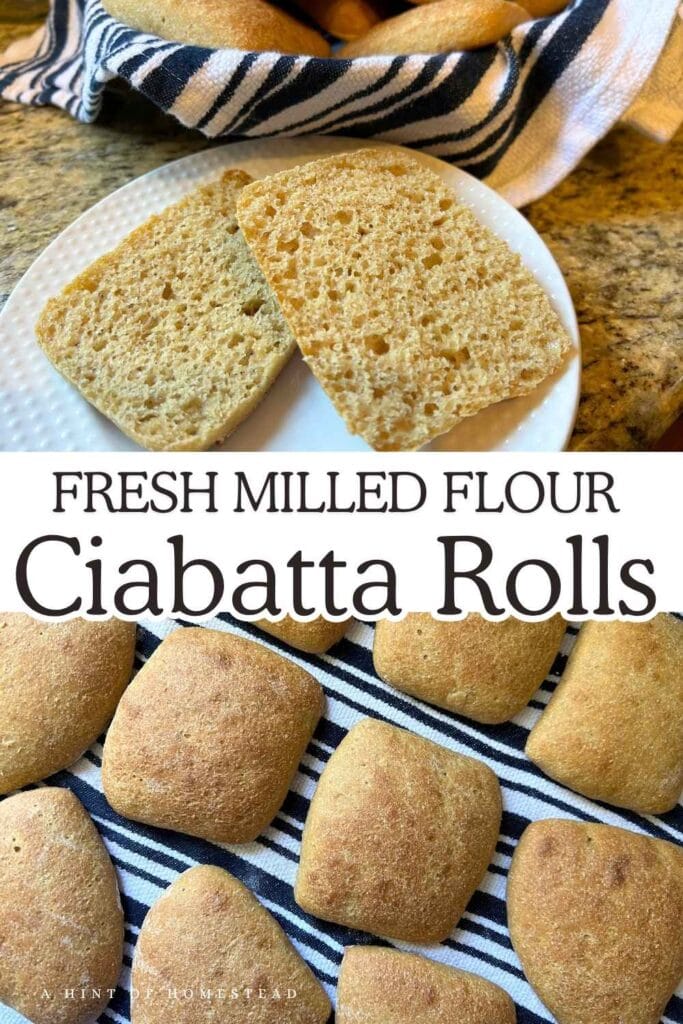




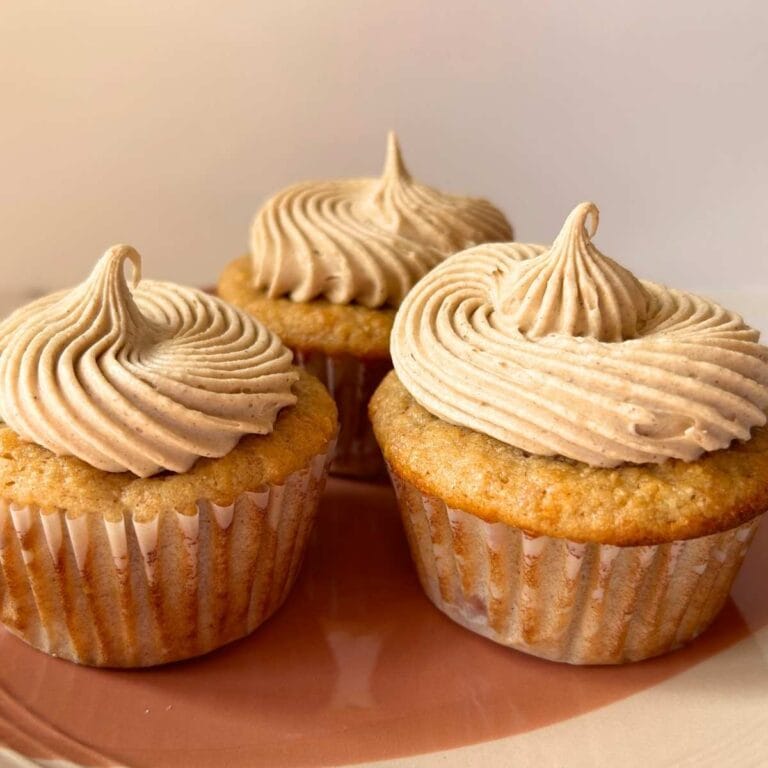

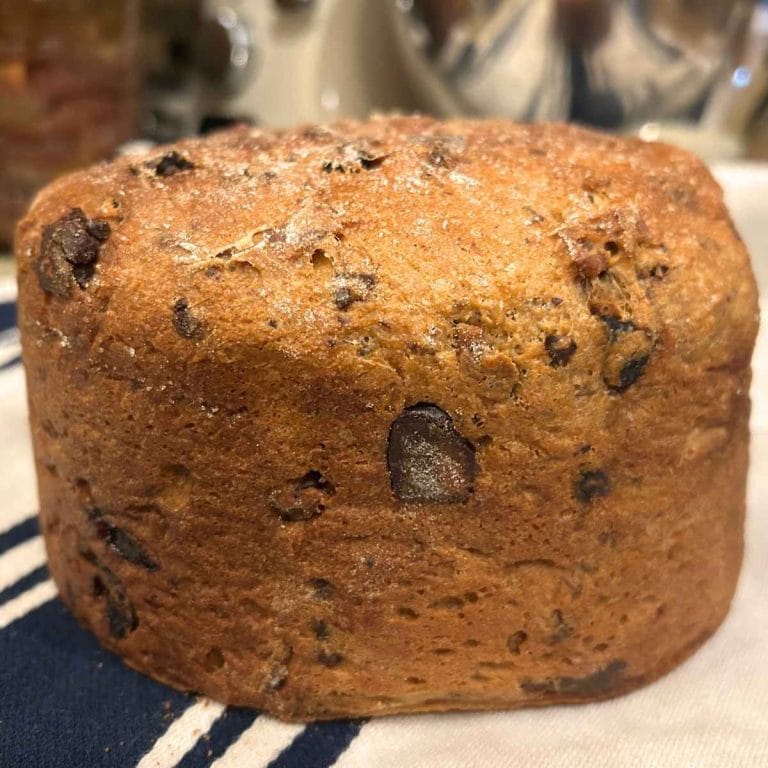
This pre-fermenting method is awesome. I love this because you get the benefits of the long ferment even if your starter isn’t necessarily active at that moment. This is awesome, and I want to learn more about this. Do you have a blog post about learning to ferment all bread recipes?
Working on that one!
These sound so good with the fresh milled flour! Thanks for sharing!
What a fantastic ciabatta recipe! They’re calling to me!
These look so good and simple to make as well! Fresh milled flour is the best!
The fresh milled I think will make all the difference! Thank-you
My husband loves ciabatta rolls, this is just perfect!
I would love to make this, but cannot use store-bought yeast. I do have a really good Active sourdough starter. Would that be enough? I also don’t have any powdered milk. Is there something I can substitute for that instead? Or could I just use raw milk instead of water?
I would try subbing the milk for water. As far as sourdough, I have not tried that swap (yet!), but I would typically use about 100 grams of starter and then reduce the liquid by 50 grams and the flour by 50 grams. Let me know how it goes!